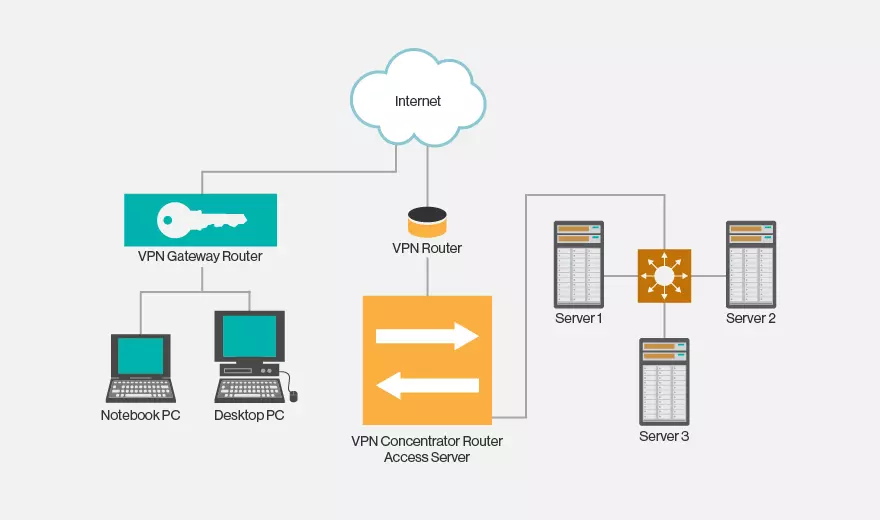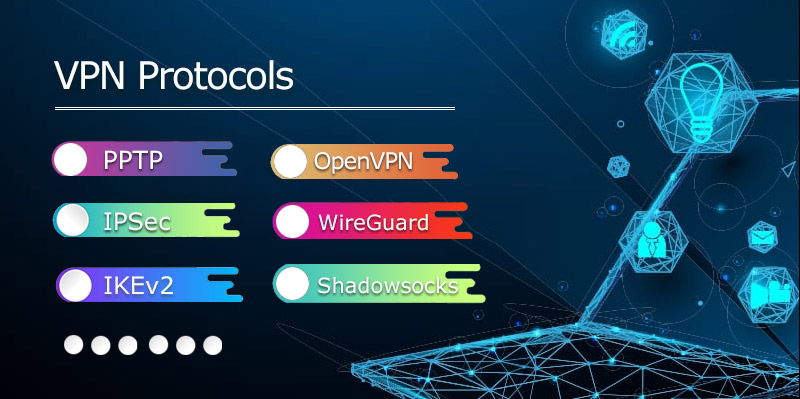Featured
Table of Contents
- – What Is A Vpn And How Does It Work?
- – Tunneling - The Tech-faq
- – Layer Two Tunneling Protocol (L2tp) By
- – What Are The Benefits Of Using Vpn Encryption?
- – Common Vpn And Tunneling Protocols
- – What Are Vpn Tunnels And How Do They Work
- – What Are The Best Vpn Protocols? A Compariso...
- – What Is A Vpn Tunnel?
- – How Ipsec Site-to-site Vpn Tunnels Work
- – A Guide To Vpn Protocols
What Is A Vpn And How Does It Work?
This gives more versatility than creating an SSH tunnel to a single port as previously described. SOCKS can free the user from the restrictions of linking only to a predefined remote port and server. If an application does not support SOCKS, a proxifier can be used to redirect the application to the local SOCKS proxy server.
This develops tun (layer 3, default) or tap (layer 2) virtual interfaces on both ends of the connection. This enables normal network management and routing to be utilized, and when used on routers, the traffic for a whole subnetwork can be tunneled.
Tunneling - The Tech-faq
VPNs can deal with any gadget that connects to the web and can run a VPN app, including your mobile phone, computer, and some wise Televisions. All you have to do is download a VPN app to your gadget and follow the directions to link to a VPN server. When you link to the VPN server, an encrypted connection is negotiated between your gadget and the VPN server.
In the last 20 years, mass security has been released against whole populations in many nations.
Layer Two Tunneling Protocol (L2tp) By
This leaves your traffic vulnerable to interception, consisting of any passwords or other sensitive information you go into. A bigger issue is that the information gathered from you by any of the above trackers will suffer an information leak that exposes your details. A VPN will not prevent all (or even most) leakages, however it is another layer of protection in an information space created to extract your information.
If you're taking a trip abroad, you can link to a VPN server back house to log in to your account. There are other benefits of a VPN that are extremely important in specific usage cases: Avoid peers from seeing your genuine IP address when using P2P file sharing (Bit, Gush).
What Are The Benefits Of Using Vpn Encryption?
VPN procedures have different strengths and weak points. Here's a fast overview: An older VPN protocol with numerous recognized vulnerabilities.
Layer 2 tunneling procedure (L2TP) and Web Procedure security (IPSec) are two procedures that typically interact to negotiate the server connection and manage the file encryption, respectively. This is a more safe system than PPTP, however it may have vulnerabilities and usually isn't as fast or steady as more recent procedures.
Common Vpn And Tunneling Protocols
A VPN tunnel is simply a metaphor for the encryption a VPN utilizes to conceal your information as it takes a trip in between your device and the VPN server. Many internet traffic shows up to others on the network, so third parties, like your web service company or government agencies, can see what sites you visit and where you are situated.
VPN tunneling also prevents hackers from misusing data by encrypting them from end to end. Many VPNs utilize AES-256 encryption, which armed forces, banks, and governments use to protect confidential information. It is technically difficult to break the AES-256 file encryption without a cipher key, as it would take trillions of years to do so.
What Are Vpn Tunnels And How Do They Work
Like IKe, V2, Open, VPN uses powerful speed and security for VPN tunneling. Wire, Guard is the most current and most safe VPN encryption procedure.
Proxies only work for internet browsers and not apps. If you use an app in spite of connecting to the proxy, your actual IP address will still be exposed.
What Are The Best Vpn Protocols? A Comparison Of ...


VPN innovation is not intricate, but there are. All of this can get extremely technical, so here's a fast rundown of which types of VPN and tunneling procedures are ideal for your business.
It becomes active only when the user enables it. Otherwise, it does not have an irreversible link. Services mainly use this type to. You can consider it as a VPN connection making a protected path from your device to gain access to delicate documents or business materials on the other end.
What Is A Vpn Tunnel?
A lot of organizations adopt widely hosted elsewhere, using huge information centers. Therefore, setting remote access VPN up might not be the most useful option as in those cases, the information would be going from users' device to the central hub, to the information center and back. Not just this might introduce.
Though, it's worth keeping in mind that you must prepare depending upon the variety of users accessing them. The more of them you'll have, the more capable hardware you'll need. is to create a unified network that is always on. It requires individually configuring for both networks, and it works finest for cases when you have numerous remote websites.
How Ipsec Site-to-site Vpn Tunnels Work
It provides in-depth directions on product packaging the data and what checks to perform when it reaches its destination. It is twofold encryption the encrypted message sits in the data package, which is further encrypted once again.
: remote access or site-to-site. It ought to narrow down your list of options. It's worth keeping in mind that neither remote gain access to nor site-to-site are the only possibilities to set up an Internet-based VPN.
A Guide To Vpn Protocols

I.e., if you're already using routers that natively support Open, VPN, it may make more sense to utilize them instead of throwing them out to get ones that can manage Wireguard.
What is a VPN Tunnel & How VPN Tunneling Works? Information, Prot is supported by its audience. When you buy through links on our website, we may earn a commission. This, nevertheless, does not influence the examinations in our evaluations. Discover More. As we browse the internet, we leave crumbs of searching data on the pages we visit.
Table of Contents
- – What Is A Vpn And How Does It Work?
- – Tunneling - The Tech-faq
- – Layer Two Tunneling Protocol (L2tp) By
- – What Are The Benefits Of Using Vpn Encryption?
- – Common Vpn And Tunneling Protocols
- – What Are Vpn Tunnels And How Do They Work
- – What Are The Best Vpn Protocols? A Compariso...
- – What Is A Vpn Tunnel?
- – How Ipsec Site-to-site Vpn Tunnels Work
- – A Guide To Vpn Protocols
Latest Posts
Best Virtual Private Network (Vpn) Software 2023
The Best Vpn For Business In 2023: Top 8 Corporate ...
Best Vpns For Freelancers And Remote Workers: Protect ...
More
Latest Posts
Best Virtual Private Network (Vpn) Software 2023
The Best Vpn For Business In 2023: Top 8 Corporate ...
Best Vpns For Freelancers And Remote Workers: Protect ...